Pro Bono Engagement
Company
Paladin
My Role
The sole designer in charge of managing the project, timeline, activities and executing research and design; in close collaboration with product, business and engineer partners.
Timeline
Q2 – Q3 2022
Paladin’s pro bono platform connects Legal Service Organizations (LSOs) with law firms, enabling legal professionals to fulfill their pro bono obligations. However, low volunteer engagement has been a critical challenge, affecting the platform’s value and revenue. This project aimed to identify and implement improvements to enhance volunteer engagement on Paladin’s platform.
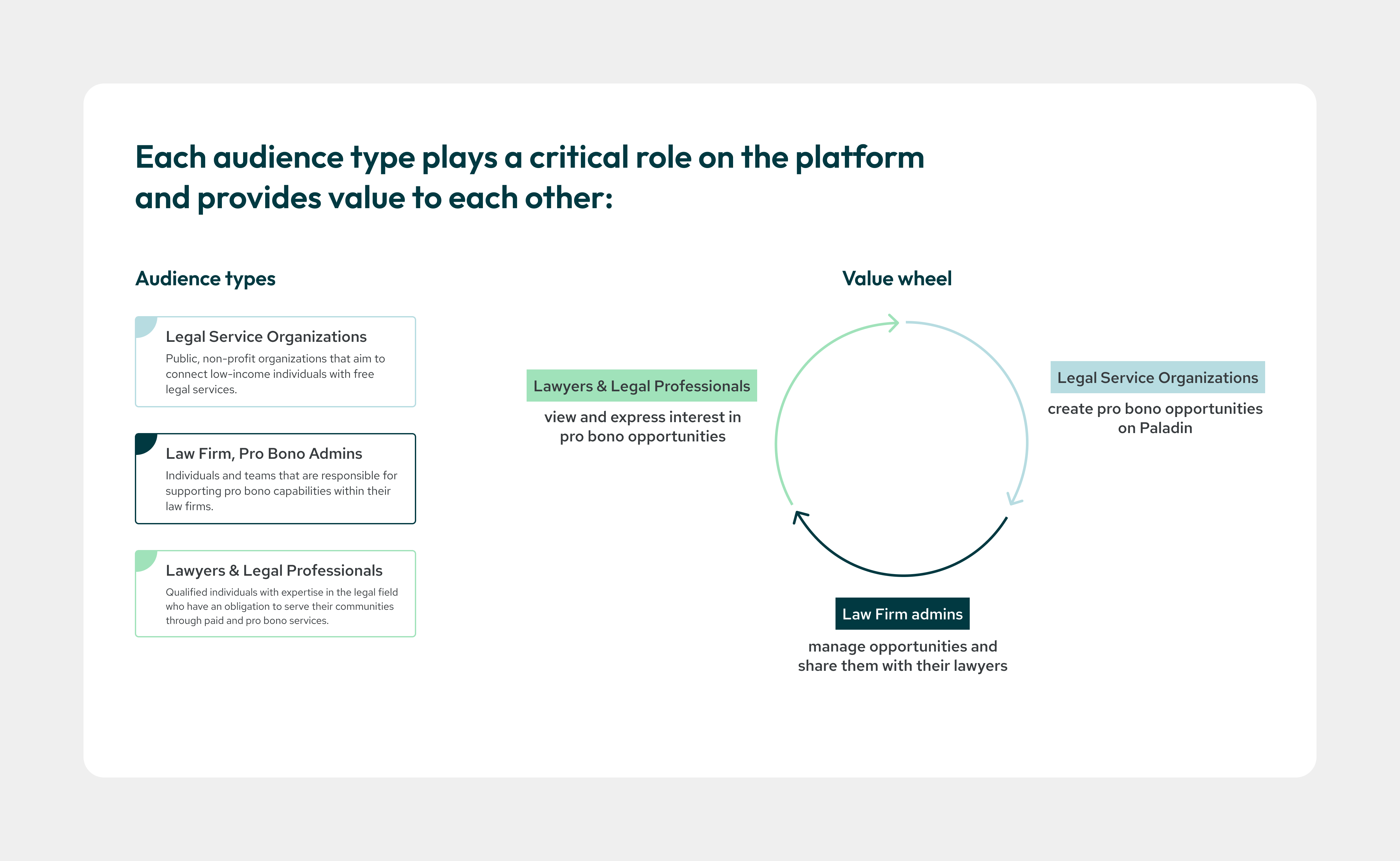
Key hypotheses:
1. Insufficient opportunities on the platform.
2. Lack of diverse and broad opportunities.
3. Difficulty searching and filtering the opportunity list.
4. Opportunities not personalized based on user preferences or interests.
I employed multiple research methodologies, including generative and evaluative studies, to collect data from lawyers and legal professionals across the country.
Usability testing
Evaluated whether legal professionals could find relevant pro bono opportunities.
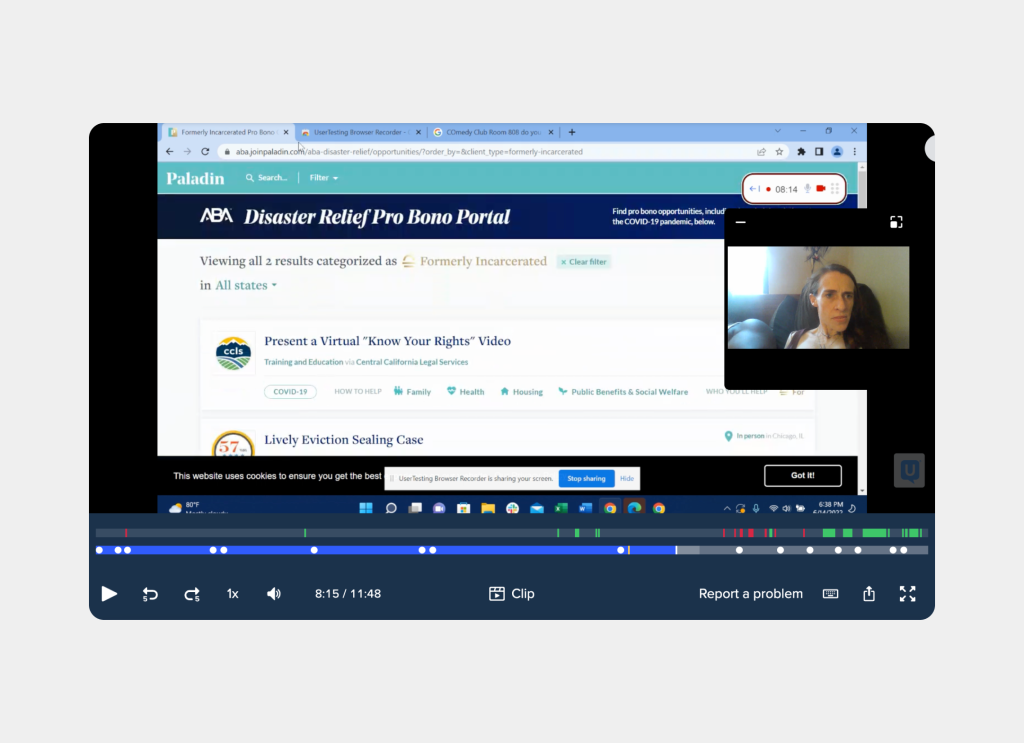
1-on-1 interviews
Explored how lawyers determine the suitability of pro bono opportunities and what makes them express interest.
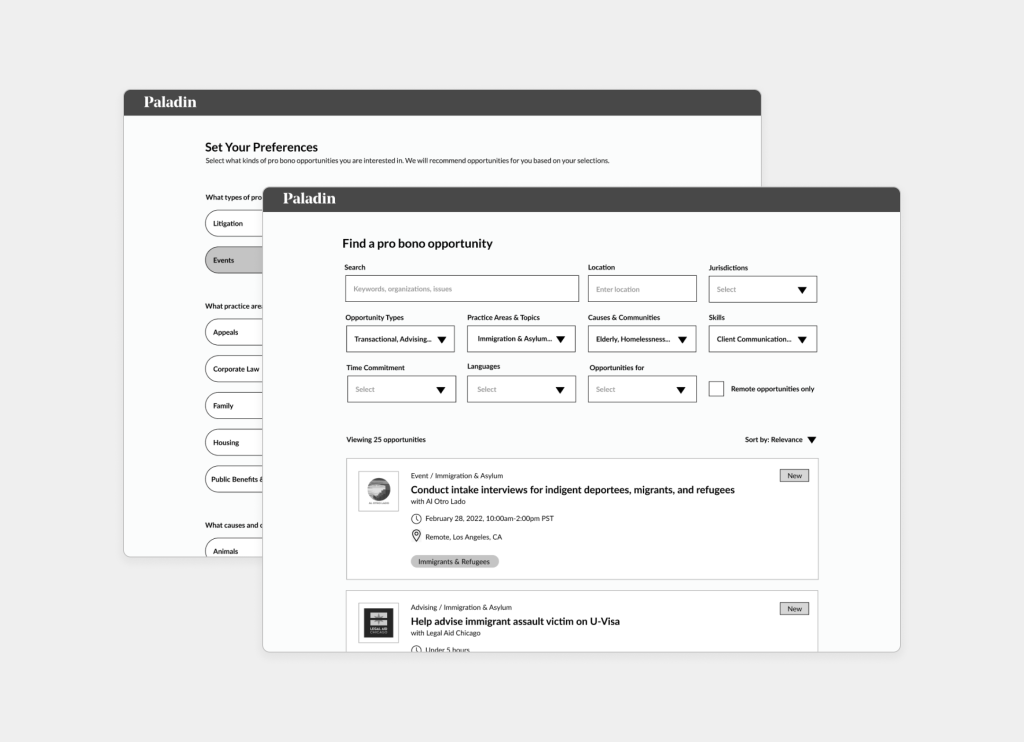
Key takeaways
Unintuitive search and filter
Users struggle to locate and use current features.
Need better prioritization
Users expect opportunities to be prioritized based on their preferences.
Lacking information
Users need quick answers to critical questions: (1) Is it in my area of expertise? (2) Do I have the right skills and licensure? (3) Does it fit within my schedule?
Timing information is too vague
Users require more specific details about time commitments.
Now that we had a better understanding of why volunteer engagement was low, I created project goals to help prioritize an initial set of improvements.
Project goals
Prioritized solutions
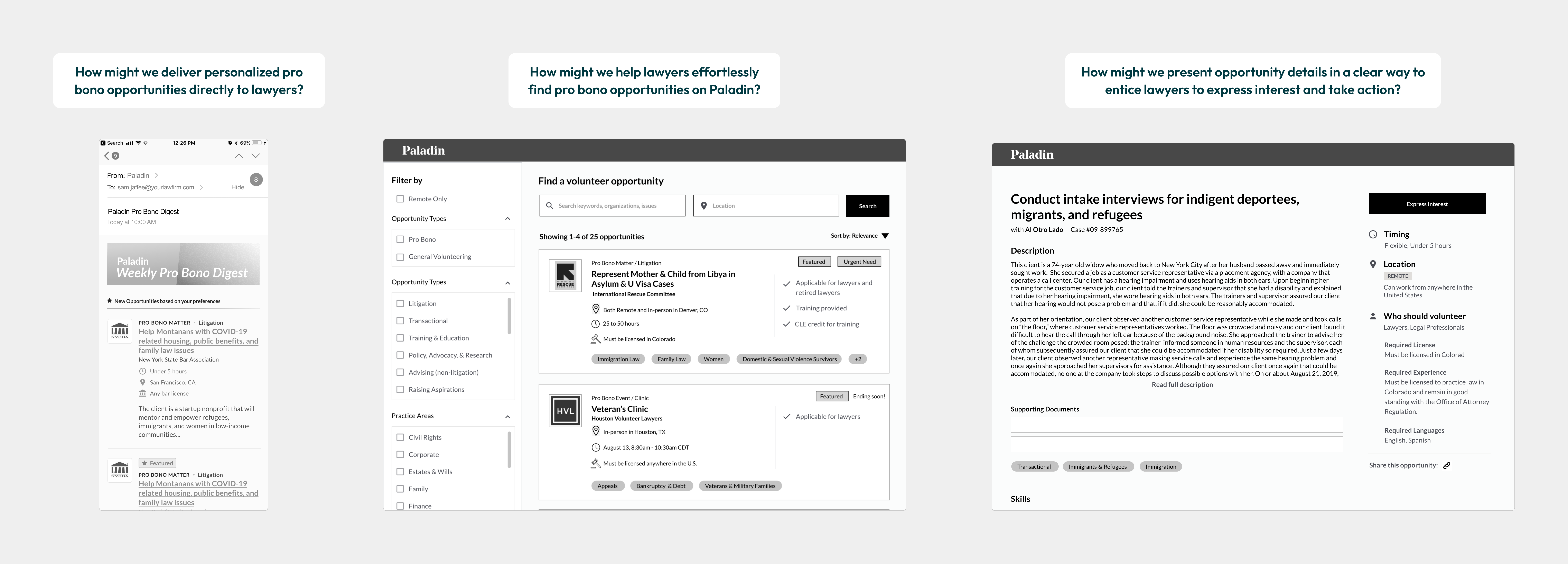
We started with low effort, high impact projects, first, to deliver value and learn from data where to continuously improve.
I was also able to introduce new branding and a design system in parallel to strengthen brand credibility.
- Low visibility
- Hard to use with limited functionality
- Slow response time
- Not responsive or accessible
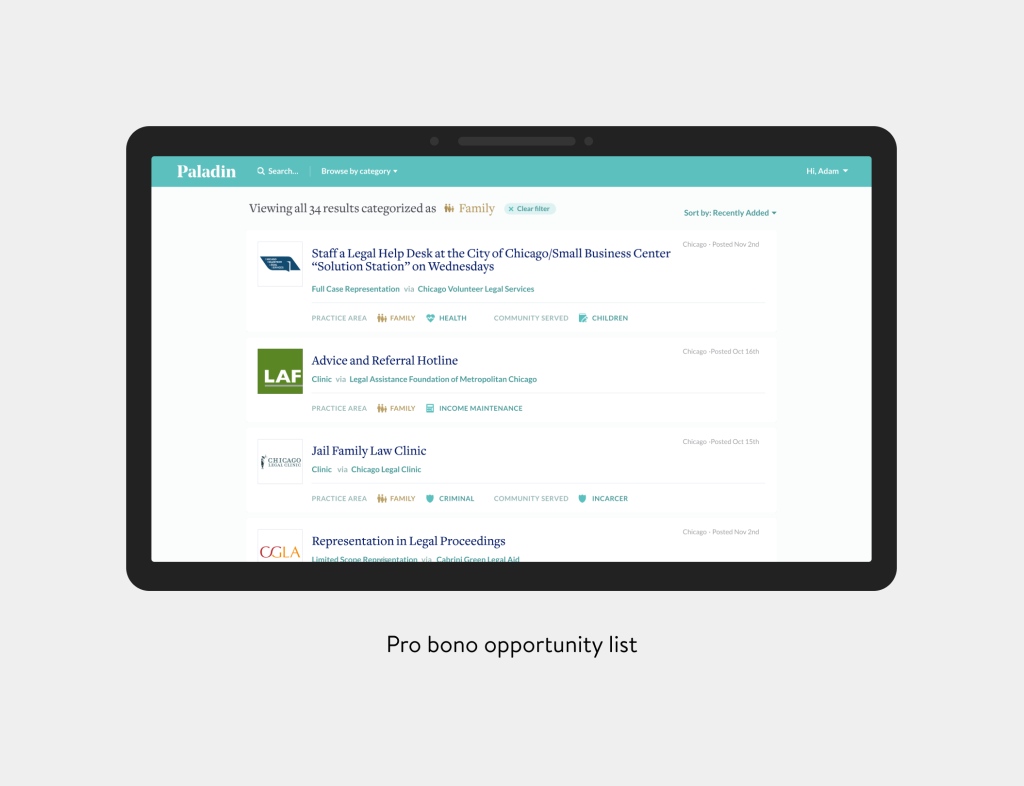
- Increased visibility and prominence
- Improved usability
- Improved performance powered by Algolia
- Responsive and accessibility friendly
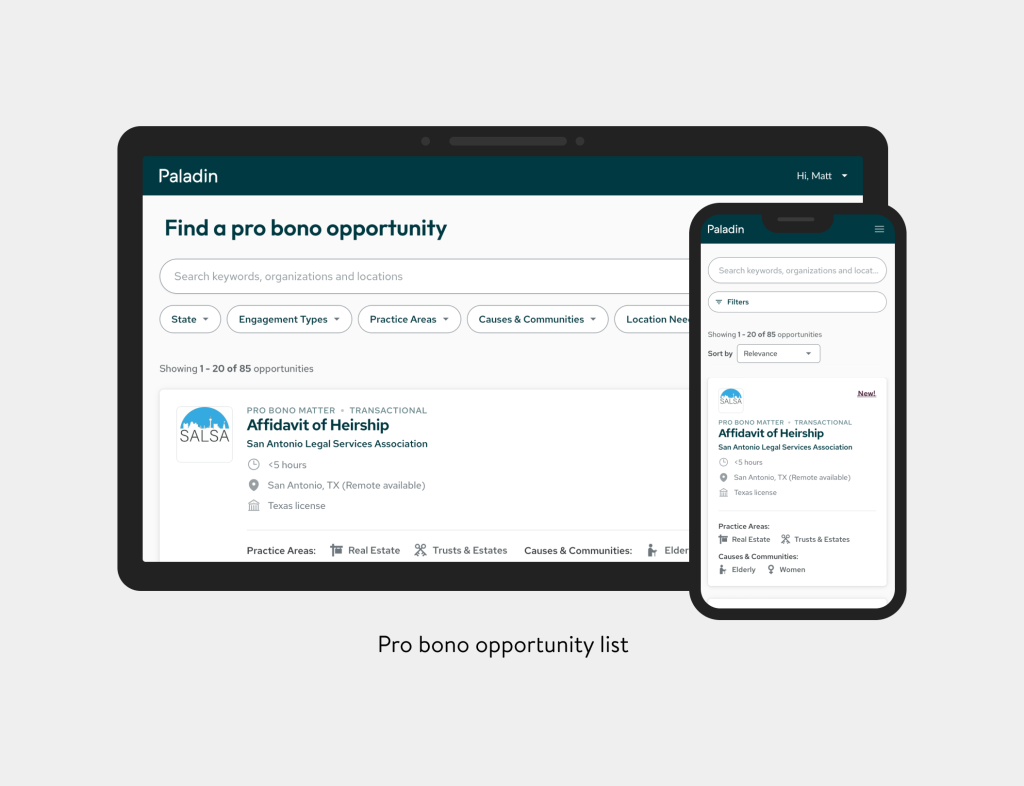
- Opportunity forms did not capture critical information needed
- Key information was buried in opportunity details
- Opportunity lists and details had poor content hierarchy and design
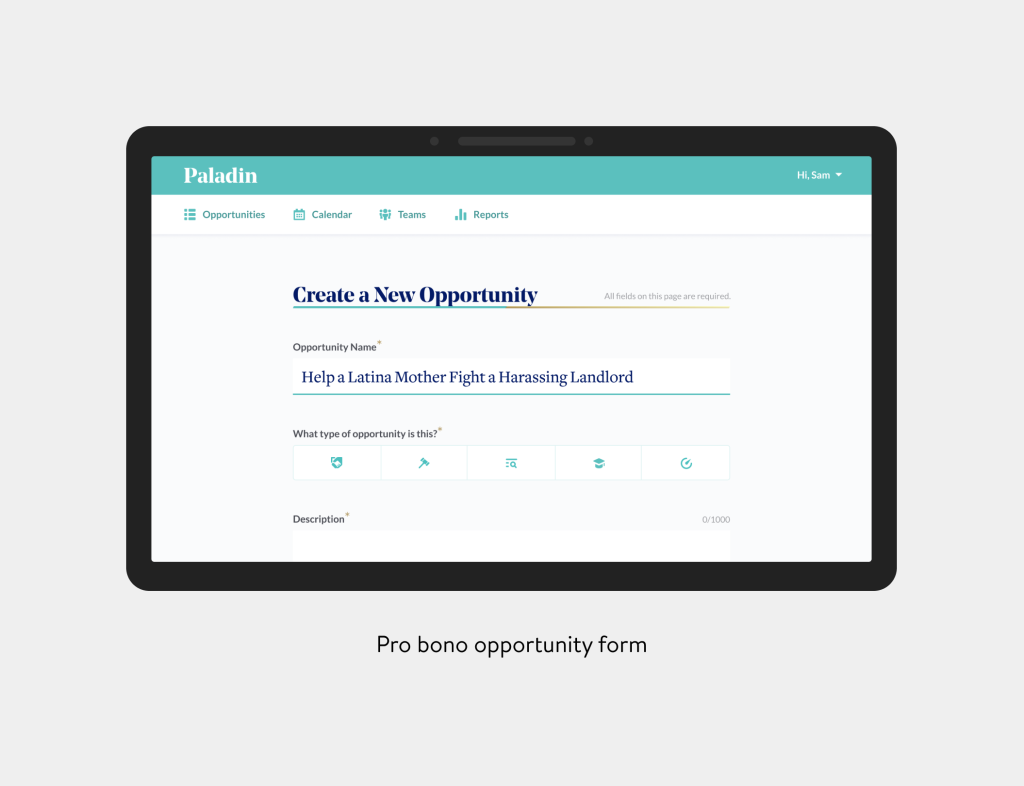
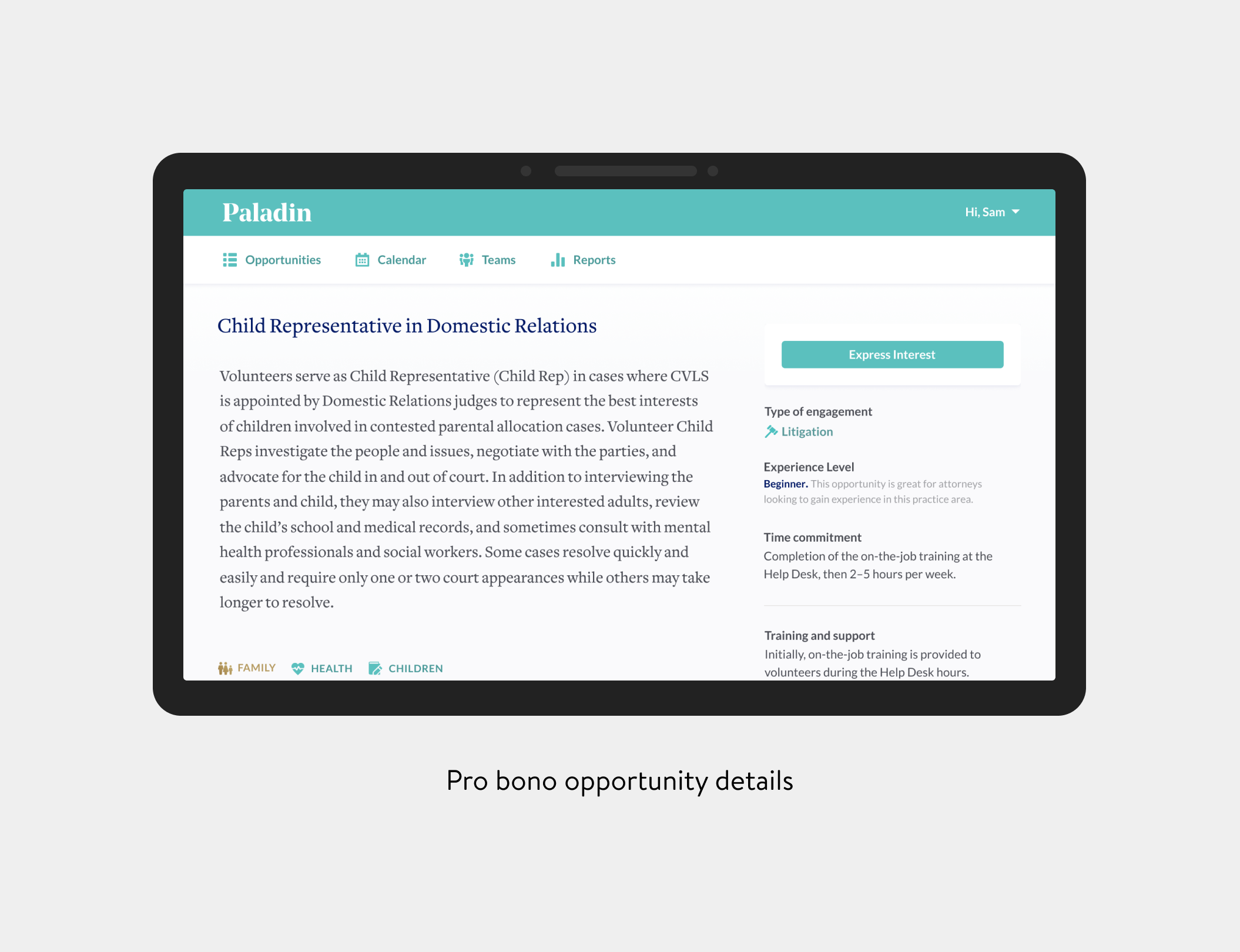
- Improved usability of forms to capture critical information
- Prioritized information across opportunity list and details
- Improved content hierarchy and design

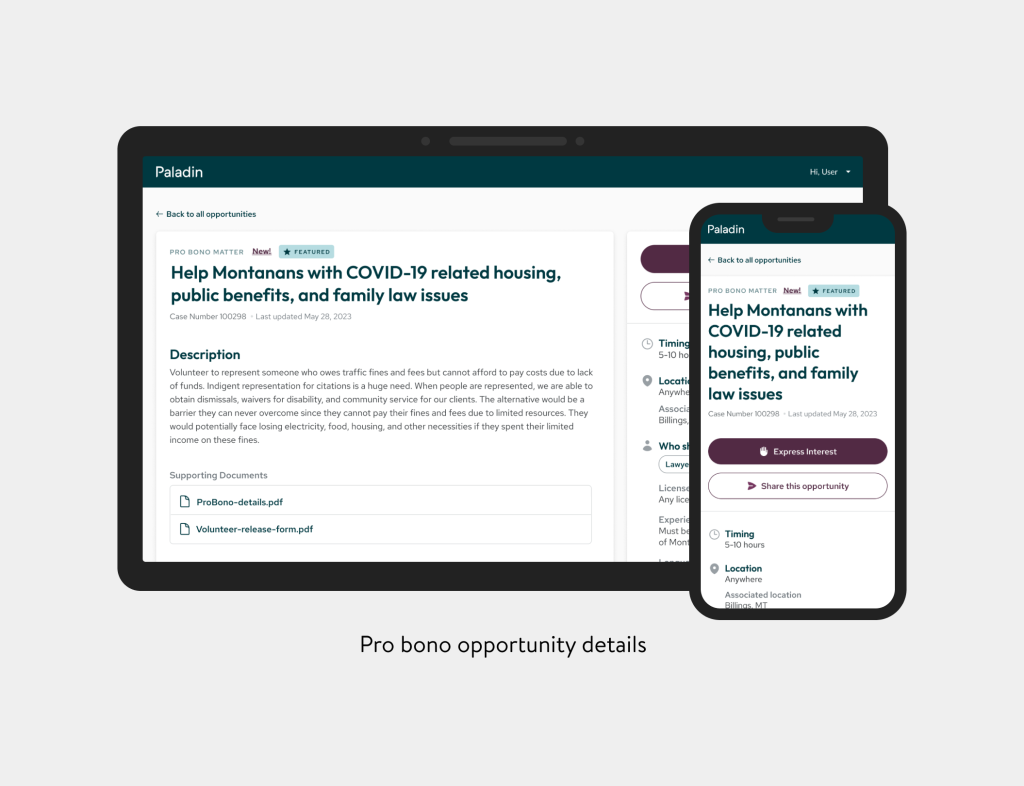
- Lack of parity across pro bono lists and digest emails
- Required users to manually refine their pro bono lists
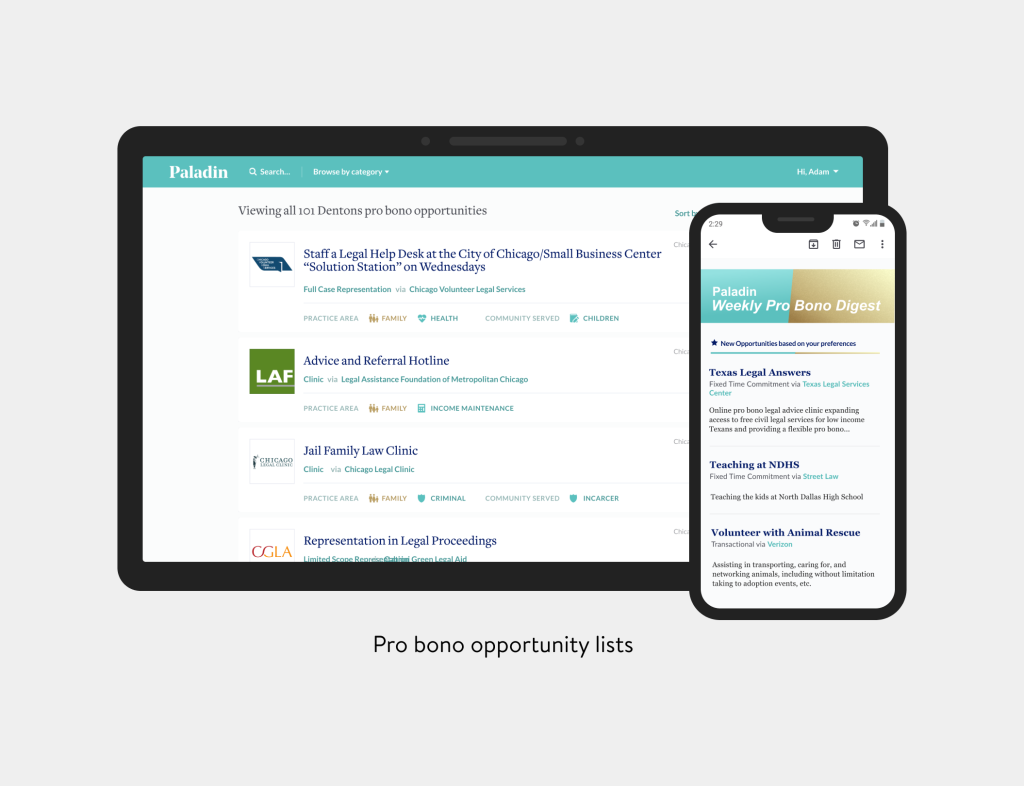
- Tailored pro bono lists to preferences across all experiences
- Used custom ranking of preferences for more nuanced control
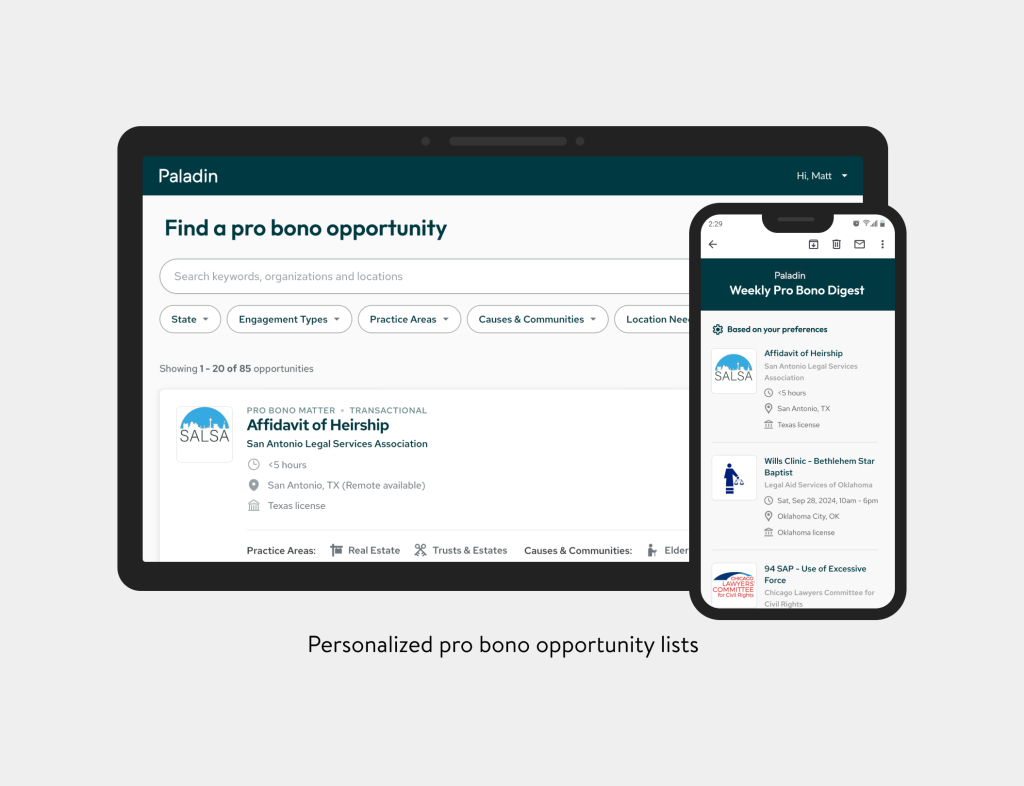

These product enhancements also helped us lay the groundwork for additional innovation to grow and scale the product.
